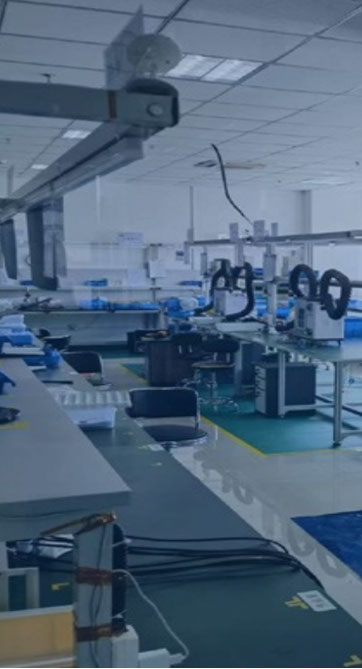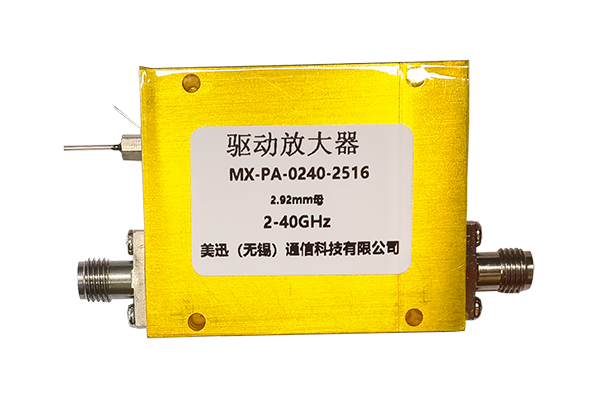
Pin diode devices are now regarded as essential parts in high-frequency circuitry given their inherent performance characteristics Their capability to switch quickly between conductive and non-conductive states combined with low capacitance and insertion loss makes them suitable for switches modulators and attenuators. The core switching mechanism for PIN diodes is based on bias-driven control of current across the junction. The applied voltage modifies the depletion layer thickness at the p–n interface thus affecting conductivity. Adjusting the bias enables PIN diodes to be switched for high-frequency operation while minimizing distortion
PIN diodes find placement inside complex circuit frameworks when precise timing and control is required They can serve in RF filter networks to selectively transmit or block specific frequency ranges. Their high-power endurance makes them appropriate for amplifier power dividing and signal generation functions. The development of compact efficient PIN diodes has increased their deployment in wireless communication and radar systems
Study of Coaxial Switch Performance
The design of coaxial switches is intricate and needs detailed assessment of numerous variables The performance is governed by the choice of switch type frequency operation and insertion loss properties. A good coaxial switch design aims to minimize insertion loss and maximize isolation across ports
To analyze performance one must evaluate metrics such as return loss insertion loss and isolation. These values come from combined use of simulations theoretical predictions and experimental validation. Detailed and accurate analysis underpins reliable functioning of coaxial switches in various systems
- Simulations combined with analytic methods and practical experiments are standard for coaxial switch evaluation
- Coaxial switch behavior is sensitive to temperature, impedance mismatch and assembly tolerances
- Innovative trends and recent advances in switch design emphasize metric improvements while lowering size and consumption
Low Noise Amplifier Optimization Methods
Tuning LNA gain efficiency and performance parameters is essential for outstanding signal fidelity in diverse systems Successful optimization depends on proper transistor selection correct biasing and appropriate circuit topology. Effective LNA designs minimize internal noise and maximize clean signal gain with little distortion. Analytical and simulation tools are vital for studying how design variations affect noise. Striving for a minimal Noise Figure assesses success in retaining signal power while limiting noise contribution
- Choosing transistors with inherently low noise characteristics is critically important
- Establishing proper bias conditions with optimal settings minimizes noise within transistors
- Topology decisions critically determine how noise propagates in the circuit
Techniques of matching networks noise cancellation and feedback control contribute to improved LNA operation
Pin Diode Switch Based Signal Routing

PIN diode switches serve as practical and efficient solutions for directing RF signals in many systems Rapid switching capability of these semiconductors supports dynamic path selection and control. PIN diodes’ low insertion loss and good isolation preserve signal quality through switching events. Applications often involve antenna switching duplexers and RF phased arrays
The switching behavior is governed by voltage driven modulation of the diode’s resistance. When off or deactivated the diode exhibits high resistance effectively blocking RF energy. A controlled forward voltage lowers resistance and enables unimpeded RF signal flow
- Additionally PIN diode switches yield high switching speed low power draw and compact footprint
Various architectures configurations and designs of PIN diode switching networks enable complex routing operations. Through interconnection of switches one can construct dynamic matrices for adjustable signal path routing
Performance Efficacy Assessment of Coaxial Microwave Switches

Testing and assessment of coaxial microwave switches are crucial to ensure efficient operation within systems. Various performance drivers like insertion reflection transmission loss isolation switching speed and bandwidth influence switch behavior. A comprehensive evaluation process involves measuring these parameters under a variety of operating environmental and test conditions
- Moreover additionally furthermore the evaluation ought to include reliability robustness durability and environmental tolerance considerations
- Ultimately comprehensive evaluation outputs provide critical valuable and essential guidance for switch selection design and optimization for targeted uses
Comprehensive Survey on Minimizing LNA Noise
Low noise amplifier designs are vital to RF wireless systems for amplifying weak signals and controlling noise. The article delivers a wide-ranging examination analysis and overview of methods used to reduce noise in LNAs. We explore investigate and discuss primary noise sources such as thermal shot and flicker noise. We examine noise matching feedback loop designs and bias optimization techniques for noise mitigation. It highlights recent progress including advanced semiconductor materials and novel circuit topologies that cut noise figure. Offering a thorough understanding of noise mitigation principles and methods the review helps designers and engineers build high performance RF systems
High Speed Switching Roles of PIN Diodes

Their remarkable unique and exceptional electrical traits make them apt for high speed switching systems Their small capacitance and low resistance facilitate high speed switching suitable for accurate timing control. Moreover PIN diodes exhibit linear proportional responses to applied voltage enabling precise amplitude modulation and switching control. Their adaptability flexibility and versatility qualifies them as suitable applicable and appropriate for broad high speed uses Applications span optical communication systems microwave circuits and signal processing hardware and devices
Coaxial Switch Integration and IC Switching Technology
Integrated coaxial switch circuits offer advancement in signal routing processing and handling across electronic systems circuits and devices. Specialized ICs manage control and direct signal transmission through coaxial cables ensuring high frequency performance and minimal propagation latency. The miniaturized nature of IC technology produces compact efficient reliable and robust designs suitable for dense interfacing integration and connectivity demands
- By meticulously carefully and rigorously applying these methods developers can produce LNAs with superior noise performance enabling sensitive reliable electronics Through careful meticulous and rigorous implementation of these approaches engineers can achieve LNAs with exceptional noise performance supporting sensitive reliable systems With careful meticulous and rigorous deployment of these approaches developers can accomplish LNAs with outstanding noise performance enabling trustworthy sensitive electronics Through careful meticulous and rigorous pin diode switch application of such methods engineers can design LNAs with top tier noise performance enabling dependable sensitive systems
- Applications range across telecommunications data communications and wireless networking
- Aerospace defense and industrial automation benefit from integrated coaxial switch solutions
- Consumer electronics audio video equipment and test measurement instruments utilize IC coaxial switching
LNA Design Challenges for mmWave Frequencies

Designing LNAs for mmWave bands is challenging because of increased signal loss and pronounced noise contributions. At these high bands parasitic capacitances and inductances dominate and require careful layout and component selection. Minimizing mismatch while maximizing gain is critical essential and important for mmWave LNA operation. Active device choice, e g HEMTs GaAs MESFETs InP HBTs, is critical for low noise performance at mmWave. Additionally the careful design and optimization of matching networks is essential to ensure efficient power transfer and good impedance match. Consideration of package parasitics is required because they may adversely impact LNA performance at mmWave. Selecting low-loss transmission paths and optimal ground plane layouts is essential necessary and important for reducing reflection and preserving bandwidth
Modeling and Characterization of PIN Diodes for RF Use
PIN diodes operate as essential components elements and parts in diverse RF switching applications. Precise accurate and detailed characterization of such devices is essential for designing developing and optimizing reliable high performance circuits. The work involves analyzing evaluating and examining electrical characteristics like voltage current resistance impedance and conductance. Additionally frequency response bandwidth tuning properties and switching speed latency or response time are assessed
Moreover furthermore additionally developing accurate models simulations and representations for PIN diodes is vital essential and crucial for predicting behavior in complex RF systems. Various numerous diverse modeling approaches exist including lumped element distributed element and SPICE models. Choosing the right model simulation or representation depends on specific detailed particular application requirements and desired required expected accuracy
Sophisticated Advanced Methods for Minimal Noise Amplifiers
Designing low noise amplifiers necessitates detailed attention to topology and component choice to reach best noise figures. Recent semiconductor innovations and emerging technologies facilitate innovative groundbreaking sophisticated design methods that reduce noise significantly.
Representative methods consist of using implementing and utilizing wideband matching networks selecting low-noise transistors with high intrinsic gain and optimizing biasing schemes strategies or approaches. Additionally furthermore moreover advanced packaging and thermal management techniques are important to lower external noise sources. By meticulously carefully and rigorously adopting these practices designers can deliver LNAs with excellent noise performance supporting reliable sensitive systems
